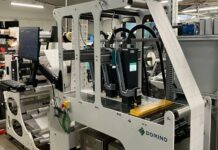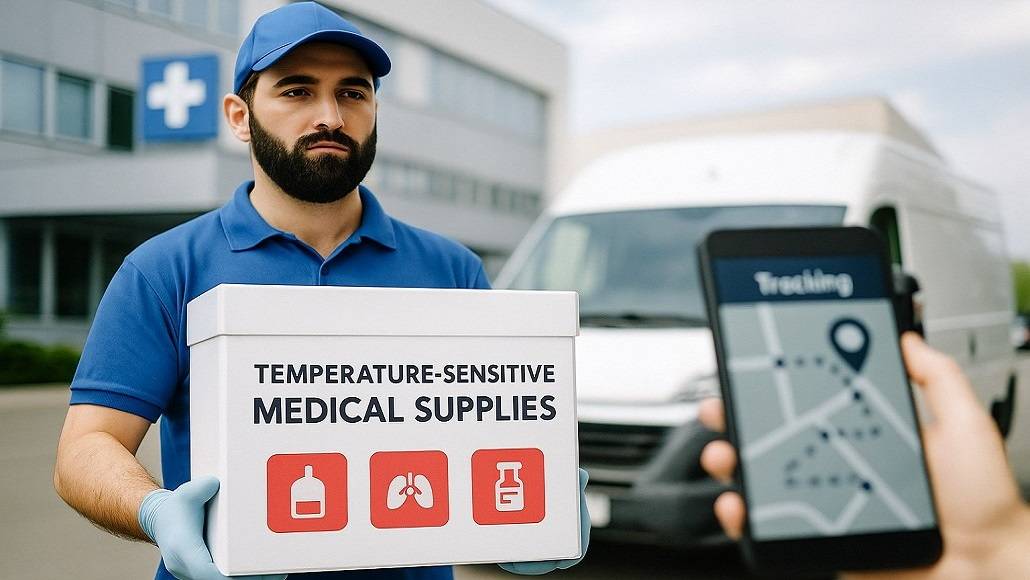At the leading edge of the healthcare revolution is the international medical courier business, providing the facilities needed in the transportation of crucial life-saving medical shipments in a timely manner, safely, and in a controlled temperature setting. With a compound annual growth rate (CAGR) of about 4.7% between 2024 and 2033, the international medical courier market is projected to reach USD 6.5 billion in 2033 from an estimated value of about USD 4.0 billion in 2023. The firm demonstrates outstanding resilience and flexibility to changing healthcare demands.
This specialised logistics firm entails the safe transportation of drugs, blood products, transplant organs, diagnostic specimens, and critical medical devices from hospitals, laboratories, pharmacies, and patients’ homes. Medical courier companies are guided by CAP and HIPAA regulations, which have a strict emphasis on critical details such as ensuring the appropriate temperature, minimising transit time, ensuring a secure chain of custody, and safeguarding confidential medical information.
Market Factors Driving Unprecedented Growth
Expansion of the medical courier industry stems from several related trends that indicate just how important healthcare logistics are becoming. Since ageing patients require specialised medical devices, rapid diagnostic services, and frequent prescriptions to treat chronic disease, the demographic of an ageing population heavily fuels the industry. Trustworthy delivery companies that are capable of maintaining the integrity of time-and-date-critical samples and temperature-critical medications always command a steady demand as a result of this demographic change.
The need for medical courier transportation is complemented with the increased incidence of chronic diseases like diabetes, cardiovascular disease, and cancer because the management of these ailments necessitates swift laboratory sample transportation, regular diagnostic testing, and ongoing prescription delivery. The intricacy of today’s medical therapies necessitates advanced systems of logistics that can handle multiple delivery demands concurrently while ensuring high quality.
Diagnostic testing technology has transformed the medical courier industry. Accurate diagnostic testing ensures faster and more precise disease diagnosis, which demands top-notch logistic systems to ensure sample integrity throughout transportation. To achieve such high standards, today’s medical couriers make use of the most advanced temperature control technology, the latest real-time tracking systems, and special handling protocols.
The rapid expansion of the biotech and pharmaceutical industries drives market growth even further. These firms depend mostly on effective logistics for the transport of biological materials, test medications, and diagnostic specimens between research institutions, manufacturing plants, and physicians. Shipping and warehouse space must become more advanced since intricate biological medications such as hormone treatments, vaccines, and speciality proteins are being developed.
Categorizing Products by Type

There are various diverse types of products in the medical couriering business, and each of these has specific treatment processes and delivery requirements:
Medical Specimens: Lab specimens, blood specimens, tissue specimens, and diagnostic specimens that need to be transported quickly and with exact temperature control to remain alive and provide accurate test results.
Pharmaceuticals: Biological drugs, prescription medications, speciality medications, and vaccines are to be handled with care, temperature-controlled, and regulated during their delivery.
Blood and Organs: Life-saving products for which the most stringent transport restrictions and emergency delivery capability are needed, i.e., transfusion blood components and organs for transplant surgery.
Medical records and X-rays: Private medical data, patient records, and diagnostic images all require HIPAA-compliant practices for treatment and a secure chain of custody. These are complemented with medical equipment, surgical equipment, protective equipment, and diagnostic equipment utilized to support all ranges of healthcare activities.
In 2023, medical supplies dominated the market, mainly driven by an uptick in elective surgery and vaccination syringe demand. With underpenetrated demand in emerging markets and continued development in healthcare infrastructure, the category continues to enjoy the strongest growth trend.
Analysis of Transport Modes
Ground transport constitutes the basis of medical courier services with flexible schedules for diverse stops and specialised vehicle configuration at affordable costs for local and regional journeys.
Air transport is essential for rapid long-distance transportation, especially for global freight with rapid transit times, organ transplants, and emergency medications.
Others: New delivery solutions such as robot postal services, drone delivery to remote areas, and tailor-made transit solutions for specific medical requirements.
End-User Division Public health institutions are government hospitals, clinics, and health centres that need total logistics support for every form of medical equipment and supplies. Private health facilities include speciality clinics, private hospitals, and health networks that require sophisticated delivery modes and high service levels. Diagnostics labs are specialty labs that need to send large numbers of specimens in a timely manner and with quality control.
Others: Other organisations that contribute to diversifying the market are pharmacies, research facilities, biotechnology firms, and home healthcare.
Innovation in Service and Technology
Through service innovation and technology integration, the medical courier sector continues to transform. Real-time tracking technology and Internet of Things-based solutions are becoming popular as methods for improving transparency and delivering accurate delivery status information. Through these technologies, healthcare providers can track shipment conditions in detail, receive real-time delivery status information, and enjoy end-to-end visibility.
For the protection of sensitive medical products, refrigerated and temperature-controlled shipping solutions are in rising demand. Advanced courier services employ advanced cold chain management technologies, including special trucks, insulated containers, and continuous temperature monitoring, for product quality from pick-up to delivery.
The application of on-demand and same-day delivery services is growing in the market. For urgent medical needs and better patient care, same-day and on-demand delivery services are becoming popular. The growing need for instant access to critical medical supplies and the growing emphasis on patient care are driving the trend.
Regional Market Outlook and Growth Prospects
With strong industry players, growing customer demand for effective services, and government financial and regulatory support, North America’s medical courier market continued to remain in the lead in 2023. Strong regulatory frameworks for secure medical transport, advanced logistics networks, and an established hospital infrastructure all contribute to the region. Asia-Pacific is likely to experience profitable growth prospects during the forecast period.
The region is expected to experience stringent growth due to rising firms providing efficient services and catering to high demand. Increasing healthcare infrastructure, improved pharmaceutical manufacturing, and increasing healthcare expenditure in developing nations are some drivers bolstering the growth of the Asian market.
Due to growing last-mile delivery as well as logistics automation, the LAMEA market is anticipated to grow at the highest compound annual growth rate (CAGR) of 7.9% from 2023 to 2032. It is due to growing pharmaceutical trade all over the globe, improved healthcare facilities, and greater demand for specialised medical logistics services.
Prospects for the Future Market and Strategic Possibilities
The medical courier industry has a very bright future, thanks to a series of structural changes that are revolutionising healthcare delivery. Predictive analytics with artificial intelligence, next-generation temperature management, green technology and sustainability, innovative healthcare delivery models, and customized delivery solutions are some of the most important themes.
Environmental Factors and Sustainability: Greater use of electric vehicles and more efficient routing are only two of the environmental sustainability and green methods entering the medical courier industry. Environmental consciousness is driving industry innovation along with the need for operational efficiency, as the trend in this case is demonstrating.
Regulatory Evolution: In keeping up with safety for the patients, data security, and product quality, the industry continues to evolve with the times to accommodate new regulatory requirements. Quality enhancements get fueled by stronger compliance systems and present opportunities for specialty service providers too.
Technology Integration: Through more route optimisation, predictive maintenance, and better customer service capabilities, advanced analytics, artificial intelligence, and automation technologies can potentially transform medical courier operations in general.
Conclusion
A vital part of the healthcare infrastructure of the time, the medical courier industry facilitates the safe and effective transportation of life-saving medical supplies that enhance patient care worldwide. Advanced medical logistics services will be in even greater demand as increasingly more individualised, technology-driven models of healthcare are developed.
This will present a variety of opportunities for innovation, expansion, and enhanced patient care. The industry is a beneficial partner in the provision of quality healthcare to populations worldwide because it is dedicated to upholding the highest safety, reliability, and regulatory standards.




























